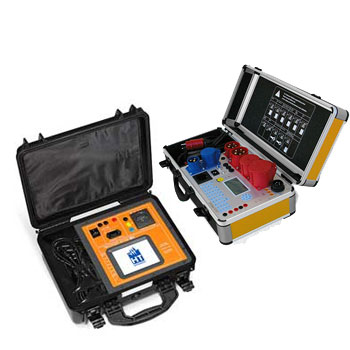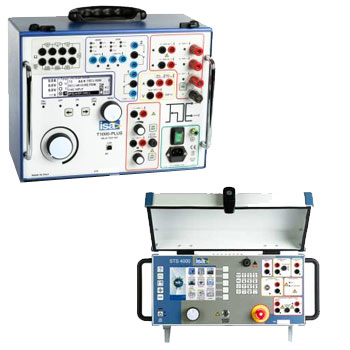
Pressure Calibration Technology – Precise Tools for Lab & Field
Pressure calibration technology ensures traceability across your measurement chain—from gauges to process transmitters. Whether hand and laboratory pumps, reference gauges, digital references, pressure controllers, or calibration software: we supply solutions for vacuum to very high pressure, for gas- and liquid-based systems, including DAkkS/ISO calibration, adapters, media handling, and documentation.
ICS Schneider Messtechnik supports selection, uncertainty budgeting, test procedures (ISO/ICH/GMP), adapter/sealing concepts, and training—so your calibration processes are safe, efficient, and audit-proof.
FAQ on Pressure Calibration
Answers to common questions about equipment, media, accuracies, uncertainty budgets, procedures, documentation, and compliance.
What are the core components of a calibration setup?
- Pressure source (hand/lab pump or pressure controller)
- Reference instrument (digital reference gauge/barometer)
- Manifolds/hoses/adapters & sealing kit
- Software/report templates & certificates
Gas or liquid system—which fits better?
| Criterion | Gas (air/N₂) | Liquid (oil/water) |
|---|---|---|
| Range | Vacuum to medium high pressure | Medium to very high pressure |
| Cleanliness | Clean, no medium carryover | Possible medium contact |
| Stability | Fast, sometimes more “elastic” | Very stable, fine adjustment |
| Use case | Transmitters/switches, mobile use | Lab, high pressure, small dead volume |
How do I choose reference accuracy?
Rule of thumb: a 4:1 to 10:1 ratio between reference accuracy and DUT tolerance. Consider the total error band (linearity, hysteresis, temperature, long-term drift).
Accuracy vs. measurement uncertainty—what’s the difference?
Accuracy is a manufacturer spec; uncertainty is a calculated budget (repeatability, resolution, environment, setup) with a defined confidence level.
What about temperature and stabilization time?
Calibrate at stable ambient conditions (20 ±2 °C). After pressure changes, allow stabilization time before reading—especially with gases.
Special notes for vacuum calibration?
Define absolute vs. gauge reference, minimize leakage, use low-permeation tubing, and apply barometric correction when using absolute references.
How should I structure a calibration sequence (up/down)?
Multipoint sequence (e.g., 0/25/50/75/100/75/50/25/0 %), up/down cycles to check hysteresis, with at least 2–3 repeats per point.
What typical pressure sources exist?
| Device | Range | Characteristics |
|---|---|---|
| Hand pump (vacuum/pressure) | -0.95…+25 bar | Mobile, fast |
| Screw pump/fine pressure pump | to 700 bar | Stable, fine control |
| Pressure controller | mbar…1000+ bar | Automatic, very precise |
| Deadweight tester | to 2500+ bar | Very high pressures |
How do I avoid medium contamination of the DUT?
Use media separation (diaphragm seals/barriers), suitable flushing media, separate adapter kits for gas/liquid; use only approved media in hygienic applications.
How can I seal many different fittings flexibly?
With quick couplers, universal adapters, cone/O-ring adapters, and well-stocked seal kits (NBR/FKM/EPDM/PTFE). Observe proper torque.
What belongs in a calibration report?
- Device ID, serial no., traceability (DAkkS/ISO), environmental conditions
- Point list (set/actual, up/down, stabilization)
- Deviations, uncertainty budget, pass/fail
- Date, technician, signature/e-signature
How often should references be recalibrated?
Typically every 12 months (usage dependent). In harsh environments/transport: shorter intervals or interim cross-checks with a second reference.
Absolute, gauge, or differential—what do I need?
Gauge for most process devices; absolute for vacuum/barometric tasks; differential for filters/flow. Choose the reference accordingly.
Tips for very low pressures (mbar)?
High-resolution references, a low-pressure pump with fine valve, minimize system volume, reduce temperature/draft effects.
Field calibration best practices?
- Mobile kit with pump, reference, adapter case
- Leak check before the run
- Digital documentation (app/CSV/PDF)
How do I integrate results into QA/ERP?
Export via CSV/JSON/PDF, interfaces to CAQ/CMMS/ERP. Maintain unique device IDs and versioning (firmware/offsets).
Safety notes for high pressure?
Wear PPE (glasses/gloves), use pressure limiting, tested hoses/adapters, secure fixtures, change pressure slowly, and never disconnect under pressure.
How to assess leakage during calibration?
Perform a pressure hold test: apply pressure, log time and decay. Check for leaks systematically (foam/leak spray), replace seals as needed.
Which software features are most useful?
- Automated point sequences
- Deviation/uncertainty calculation
- Templates, e-signature, audit trail
Do you offer DAkkS calibration?
Yes. We supply instruments factory calibrated or with a DAkkS certificate—including full traceability and uncertainty statement.
Can you help select the right system?
Gladly. Provide range, medium, connection, target uncertainty, and use (lab/field)—we’ll configure a tailored, scalable kit with accessories and training.



















































































































































































